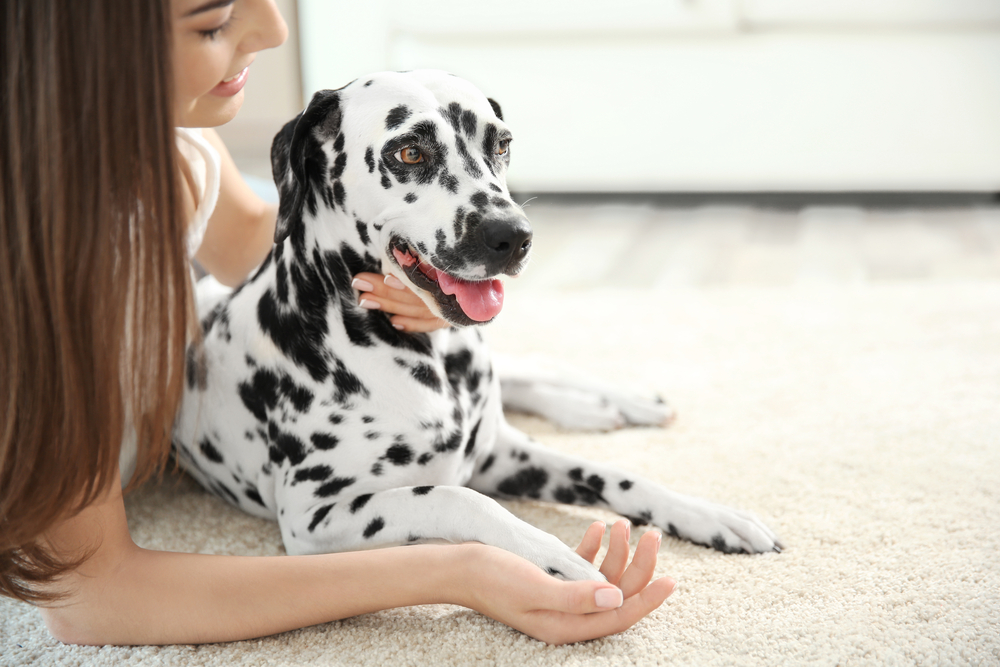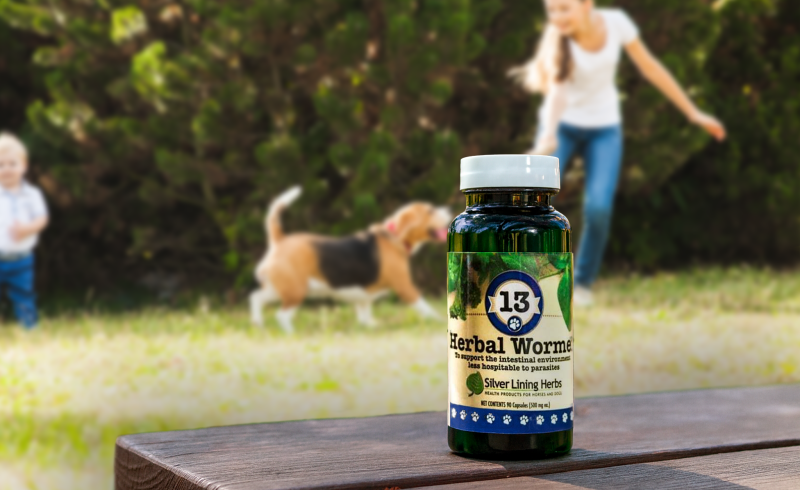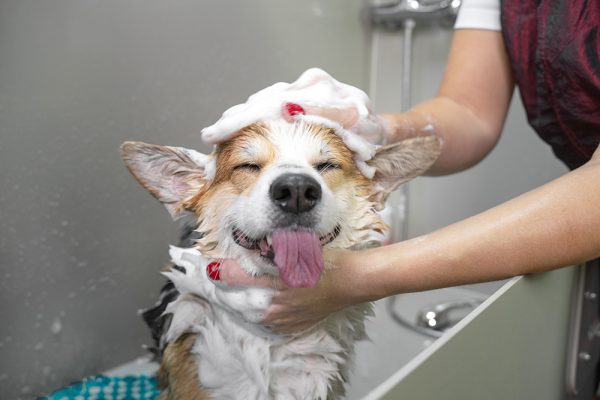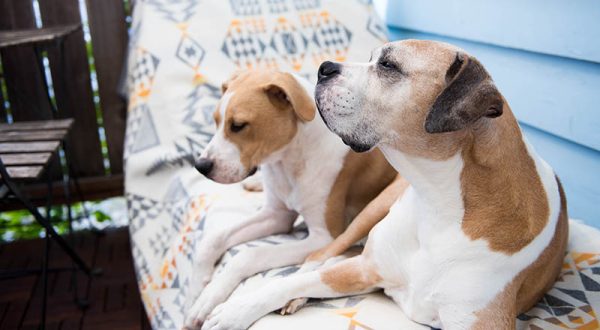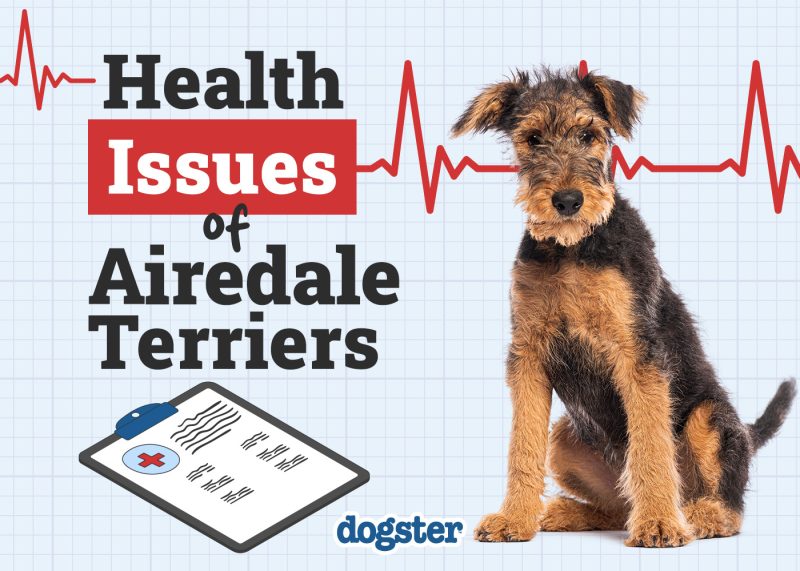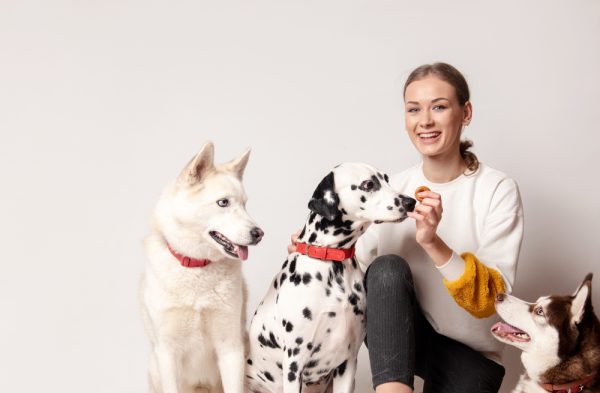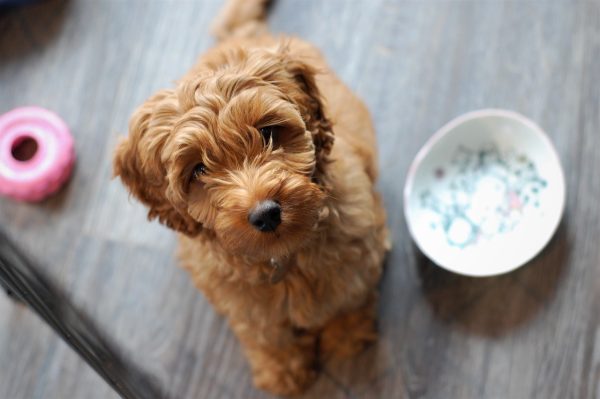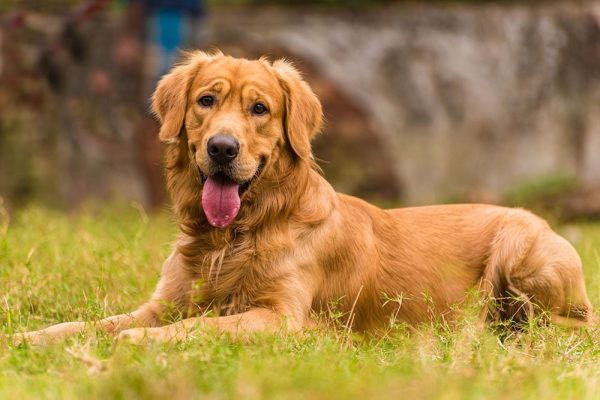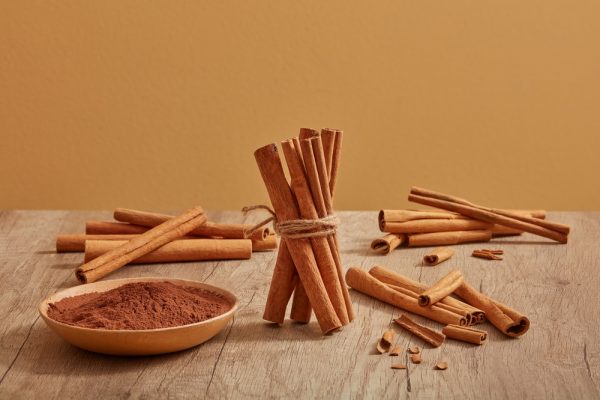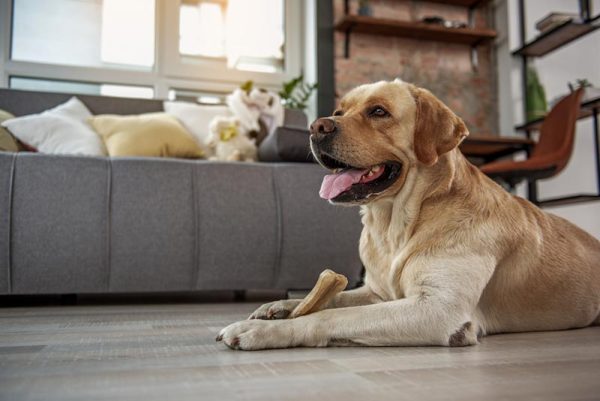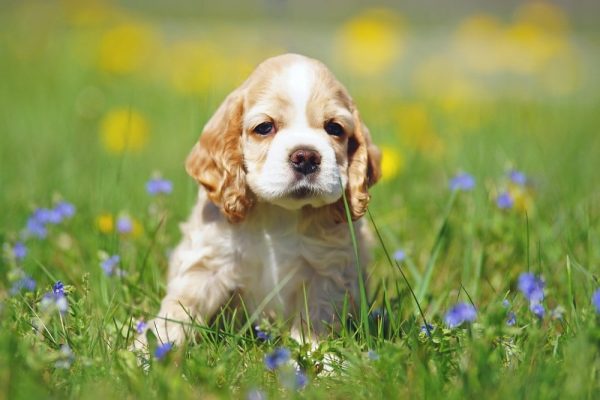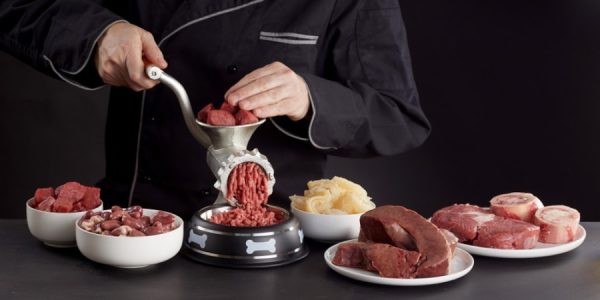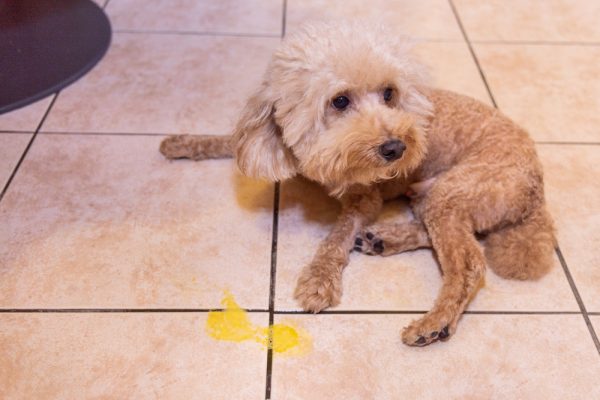When you look at a fresh litter of little puppies, you can see some pretty unique, extraordinary colors. But what’s the deal with how drastically some dogs’ coats change as they age? It’s a phenomenon that’s pretty common—especially in certain breeds.
In this article, we want to show you the puppies that most commonly change color as they grow up. Some you might know, and others might be a surprise! In any fashion, let’s get to know these famous dog breeds a little better.

The 8 Dog Breeds That Change Color
1. Dalmatian
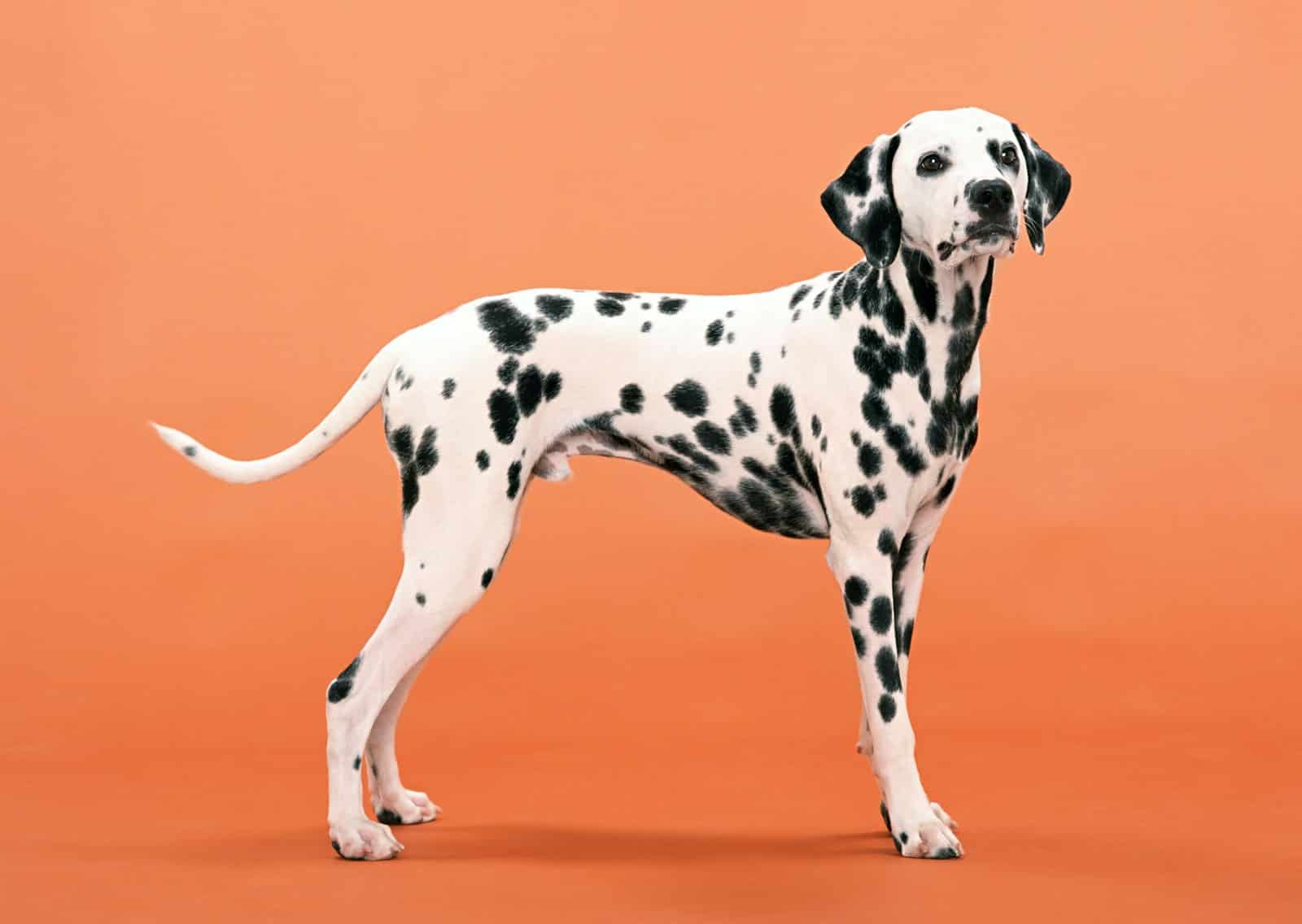
The Dalmatian may be among the most well-known dogs that change as they age. If any of us have ever watched 101 Dalmatians, you might have heard Cruella de Vil screaming about the pure white atrocities when she goes to visit the puppies.
They proceed to explain to her that Dalmatians are born white and take a few weeks to “grow into their spots.” So, is there any truth to this? Absolutely. Dalmatians start to develop spots around 2 to 3 weeks. However, they don’t fully develop all their beautiful spots until the 1-year mark.
Breed Characteristics
Dalmatians are exceptional dogs for experienced owners. They have a lot of quirks that many novice owners might not be prepared for. For example, over 30% of Dalmatians are deaf, which can be difficult for some owners to navigate.
Also, Dalmatians are high-energy dogs that require a ton of exercise. On average, they require at least 2 hours of exercise per day, broken up into increments. So, they will likely require space to explore, daily walks, and a large, secure backyard to play.
2. Shih Tzu
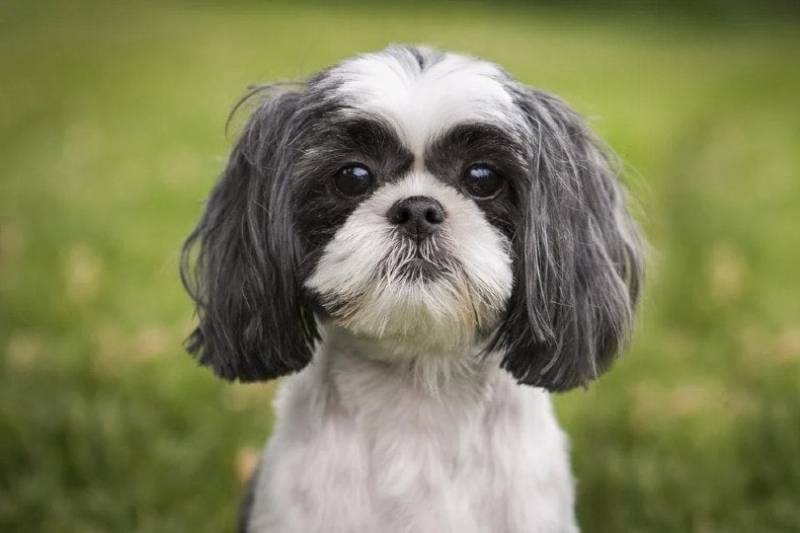
Shih Tzus are such popular little dogs because they are so easygoing and fun to groom! These puppies are well known for changing their coat color as they grow up. Once your Shih Tzu enters the 1-year mark, it might look like a totally different dog than it did as a baby.
Many Shih Tzu breeders will tell you when you’re shopping for pups to never choose your puppy based on color. It’s totally normal for a puppy to be very dark colored but end up being light or gray as an adult.
If a Shih Tzu carries the ‘G’ gene, it can cause coat fading as they age. If your puppy carries this gene, they normally begin fading around the 1-month mark, and it progresses throughout their youth. If your Shih Tzu has the ‘CH’ gene, or chinchilla gene, it can turn to a rich silver. Rather than fading, it turns a very specific spectacular color.
Breed Characteristics
Shih Tzus are known for their good nature, easy adaptability, and excellent companionship potential. They are also small and compact, making them ideal for apartment living. They tend to get along very well with other animals and children, permitting that they are raised together.
Sometimes, Shih Tzus can be hard to potty train. They can also suffer from a few more health issues than normal dogs. So, buying from a reputable breeder is crucial!
3. German Shepherds
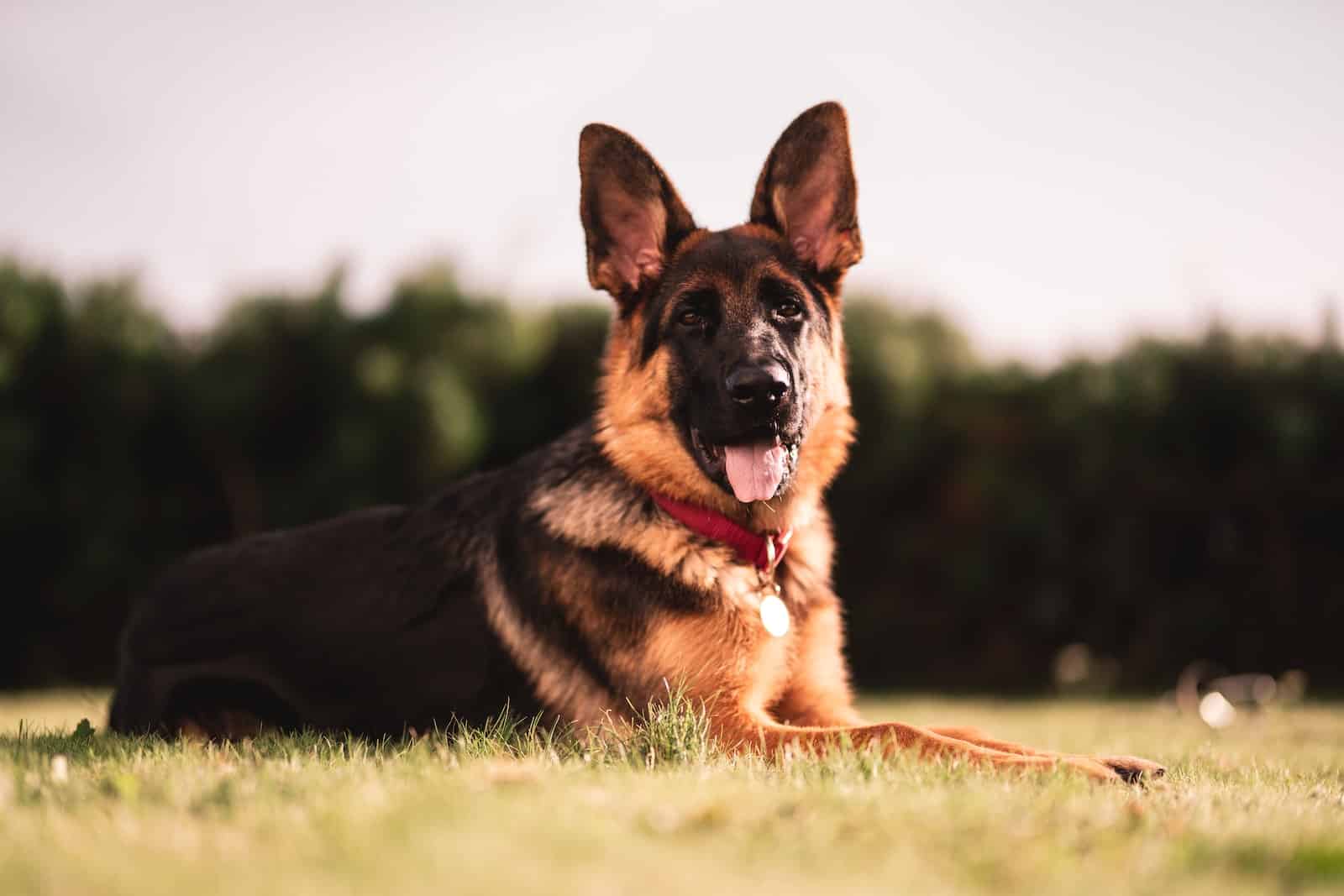
German Shepherds are one of the most popular dogs in America—and for a good reason! They are also among the dogs that can change color easily, but only if they are sable. The ones with standard coats, such as black and tan, red, silver, or gray can lighten slightly as they grow.
If your German Shepherd is sable, however, they can drastically change hue as they age. So, your puppy may be very dark but lighten up as they get their adult coats. It’s one of the most unique things about this coat type—and they are stunning as adults! Sometimes, they can even go the opposite way! They will be lighter as puppies and darker as adults! Genetics play a huge role in determining adult coat color.
Breed Characteristics
German Shepherds are not only remarkably beautiful dogs, but they are also highly trainable and capable of understanding a variety of tasks. These dogs aren’t for the faint of heart. They can be incredibly protective and could even be aggressive without proper training and handling.
German Shepherds are usually best suited for experienced owners who have plenty of time to spend with them and they need lots of room to roam. These smart cookies rank in the top three most intelligent dog breeds, so it’s best to get a handle on training them so they understand the hierarchy.
4. Poodle Crosses
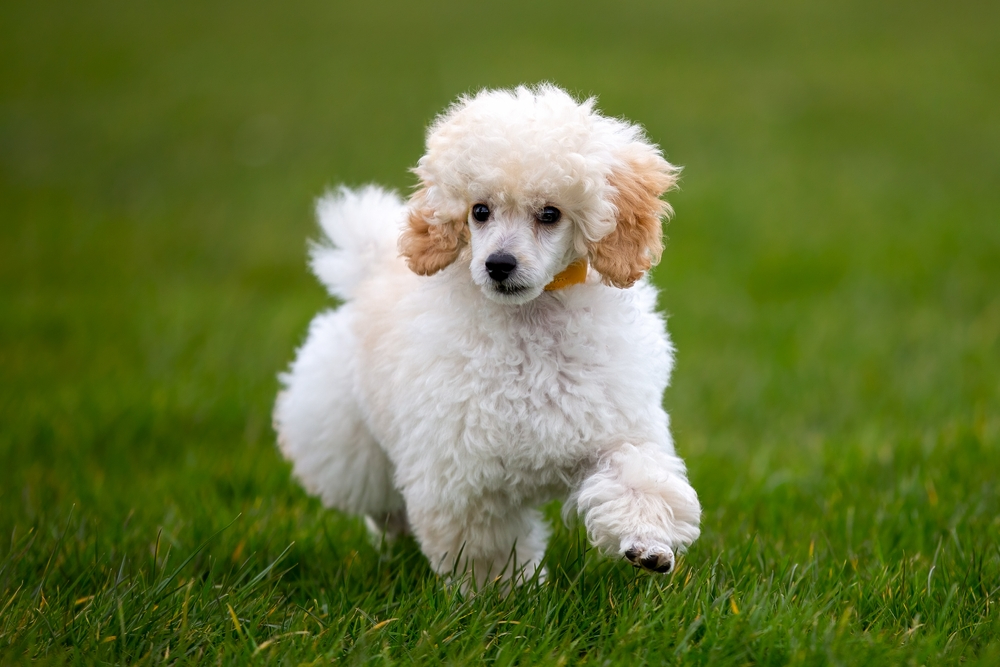
Poodle crosses, or ‘Doodles’, are all the craze these days! Because of all the different genetics that can come into play, there can be a lot of color changes happening while your pup matures. It will greatly depend on the type of cross and influences therein.
Unlike some other breeds, Doodles can change color throughout both puppyhood and adulthood. You might have a dark chocolate puppy and wind up with a light mocha adult. Also, gray streaking is extremely common.
Poodles themselves have many color variations. Depending on what they are mixed with, they can wind up with all sorts of color mixtures in their coats—everything from spots to tri-color to a combination of threaded colors.
Breed Characteristics
Doodles can have a variety of personalities, depending on parental influence. Poodles themselves tend to be very dignified, loyal, and intelligent. When you mix them with another breed, you could get any looks or personality combo in between.
Usually, Doodles require training to be well-behaved dogs. While good-natured, they can be pretty hyper and sometimes neurotic. Vets might also tell you that Doodles like to chew on everything! So, be prepared for their special quirks before purchasing these curly cuties.
5. Kerry Blue Terrier
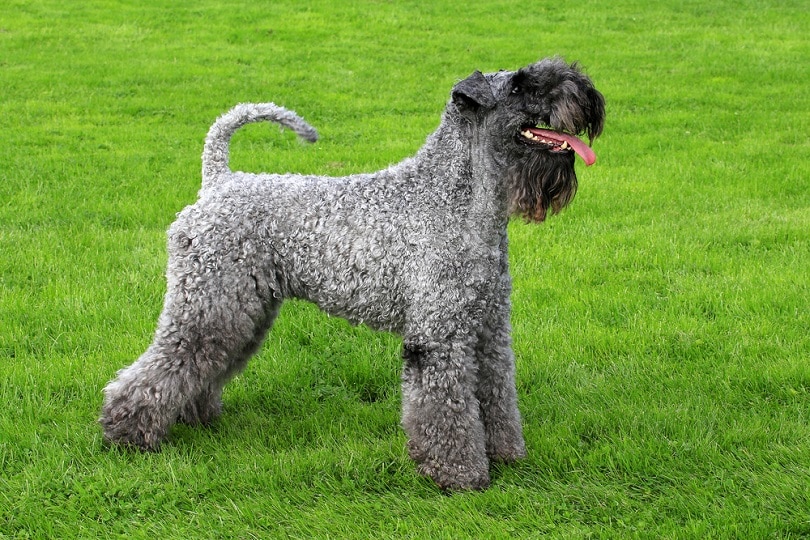
The Kerry Blue Terrier changes color as part of the breed trait. They are born as coal black, adorable little puppies and fade to the classic blue as they age. This process is called “clearing” and is a natural part of their growth and development.
This particular breed may have darker markings on their feet, head, and tails. The signature blue is the breed’s trademark, and many would be surprised after having admired the adults that the puppies are so dark!
Breed Characteristics
The Kerry Blue Terrier is rather rare and could be hard to come by, depending on where you live. True to their terrier nature, they are a solid breed and don’t make the best pets for novice owners. However, they can make amazing additions to the right homes.
Like many terriers, the Kerry Blue is a very alert, highly intelligent dog with a strong will and unmatched loyalty. They will require a firm hand, or they will rule the roost. When raised with patience, these dogs are phenomenal companions that will warm your heart.
6. Havanese
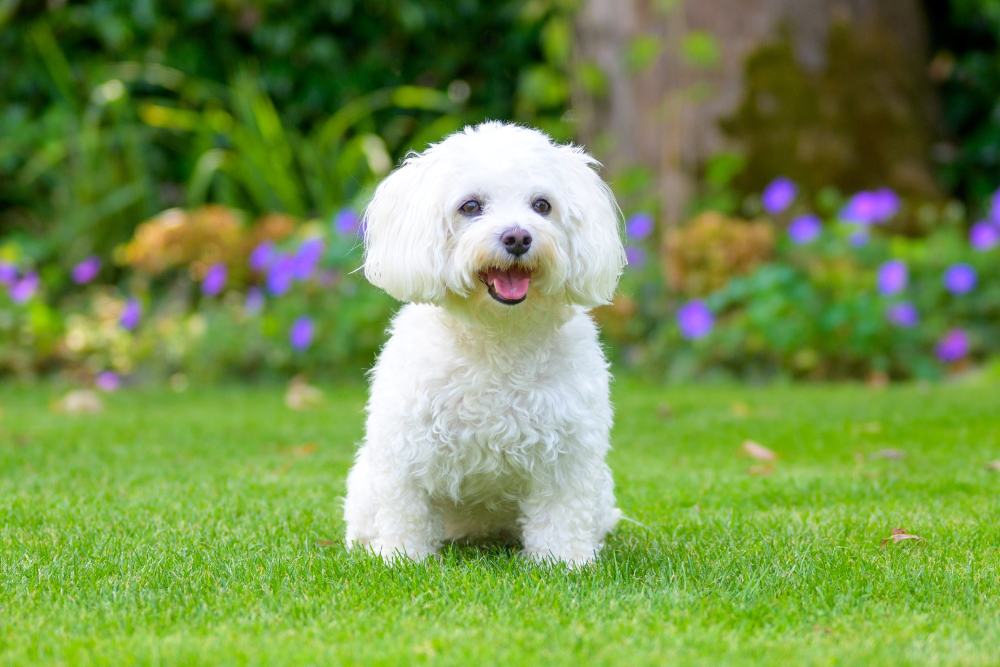
The Havanese is well-known for being one of the most loveable pups of all time! However, it’s another one of those puppies that look completely different as a puppy versus an adult! So, when you’re smitten by certain colors, keep in mind that it’s hard to tell how they will look in 6 months.
Much like the Shih Tzu we discussed above, most Havanese undergo ‘fading’ as they develop. So, if your puppy is very dark, you can count on the shade to be much lighter or even change to a surprisingly different lighter shade altogether.
If you ask any Havanese breeder for a specific color, they will likely tell you, “Sorry, I can’t guarantee that!” Anyone with knowledge of the breed will tell you it’s a gamble, so enjoy the colors that drew you in initially, but plan for a very different-looking adult.
Breed Characteristics
The Havanese is an incredible companion. In fact, they are the only Cuban-developed dogs and were designated for the specific purpose of being a loyal partner to all. They don’t disappoint! This little cutie is great with people and pets of all ages and is highly trainable and sweet!
7. Bedlington Terrier

Have you ever seen a Bedlington Terrier? This unique sheep-like breed is somewhat rare to find and might be pretty elusive to some canine lovers, but they are certainly worth your attention. This breed is notorious for changing colors all throughout their lives!
Bedlington Terriers change colors from puppies to adults during heat cycles and after hair trims! Typically, instead of becoming lighter after trims like many dogs do, many Bedlingtons become darker. The reverse can also be true.
Bedlington puppies are typically born black or brown and many change to a light color, or even white, as adults. It might astound you to watch your puppy navigate through the color wheel over the years.
Breed Characteristics
The Bedlington gets special attention for their social behavior, loving both owners and strangers alike. They are often described as headstrong and courageous, fiercely protecting, alert, and defending those they love.
8. Bearded Collie
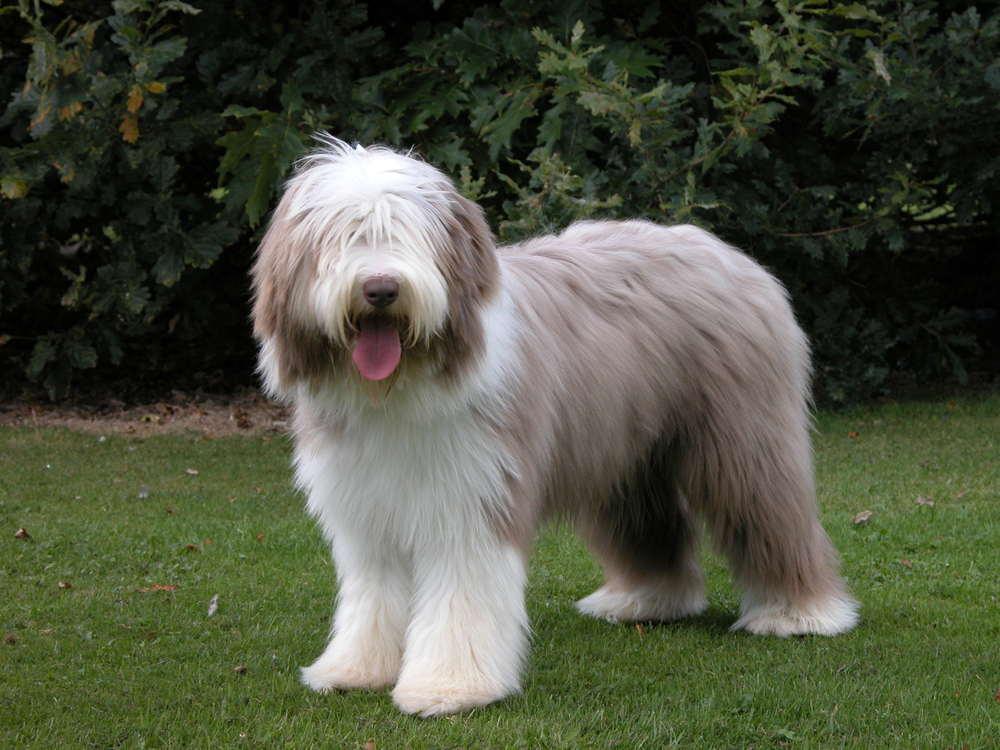
The beautiful Bearded Collie is our final dog that can change colors. As puppies, the dark patches on the Bearded Collie can be incredibly dark, or even black.
While they grow, they have the graying gene, meaning they lighten up significantly. It varies based on the color of the pup and whether they are a “stay black” or carry the graying gene. Most Bearded Collies turn very dark again as adults and are fully colored by age 3.
In any case, the ultimate color is hard to predict and will be very different depending on the dog. This can surprise owners who aren’t familiar with the coloring process. But if you’re interested in the breed, you can ask questions directly to the breeder.
Breed Characteristics
Bearded Collies are revered for being intelligent, friendly, and excellent with other pets. These alert dogs can keep watch for you, but they are not inherently aggressive. They prefer to have space to roam, so make sure you have the time, energy, and space for this fabulous pooch.

Why Would an Adult Dog Change Color?
If you have a fully grown pup, they should be well past the breed coat color changes. However, changes in the coat can still happen—but why?
Sunlight
Sunlight can really change the color of the coat. Perhaps the most obvious example is a black dog fading to rusty brown with long-term sun exposure. While this might be the most drastic example, it can happen with other colors as well.
Medications
Certain medications can alter coat color dramatically. If your dog takes medication regularly and you notice coat changes, mention it to your vet to check if it’s a side effect.
Nutritional Deficiencies
If your pup is nutritionally deficient, it can cause major changes in the coat. Not only can it get drab and dull in color, but it can also thin out and become very dry in texture. Typically, healthy dogs with a sound diet have no issues with nutritional deficiencies.
However, certain health conditions can occur, causing nutritional deficiency. Some examples would be vitiligo, alopecia, cancer, and hormonal imbalance.
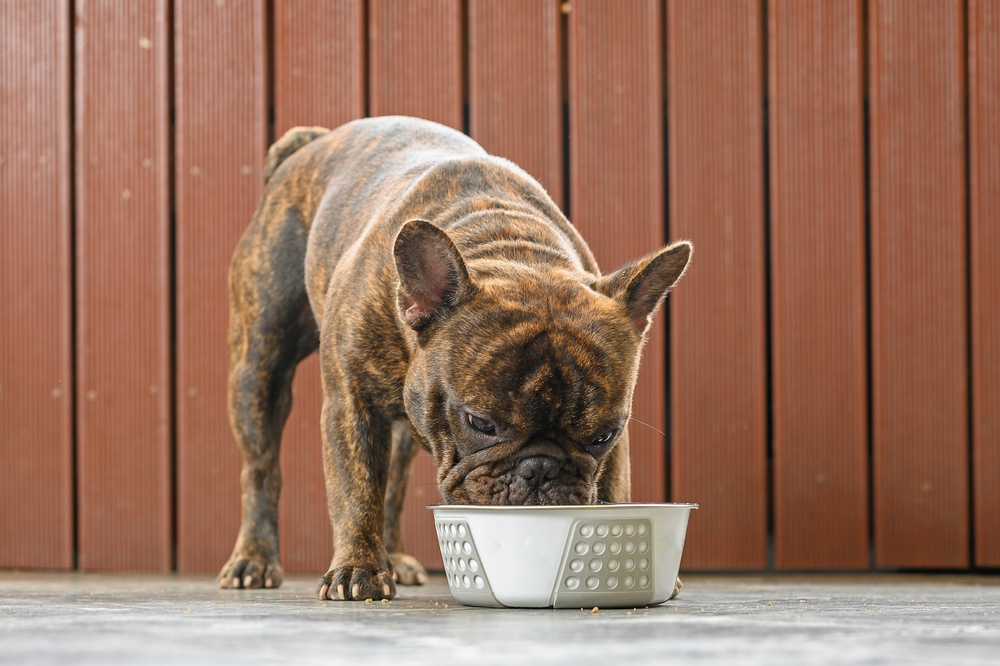

Conclusion
Now you know a few breeds that can fool you when they are puppies! It’s so awesome watching your puppy grow and develop into the lovely dogs they become. If you have your eye on any of these breeds, you know now not to be surprised, but rather excited at the final result.
Of all these glamorous color-changing pooches, which one got your attention most?
Featured Image Credit: Africa Studio, Shutterstock
